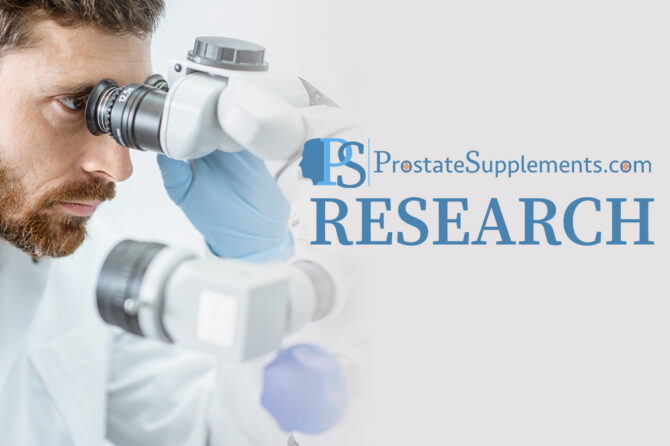
Oswego Tea (Monarda didyma) — Health Effects with Focus on Men’s Health, Prostate & Urinary Function
Abstract
Oswego tea (Monarda didyma L.), also known as bee balm or bergamot (not to be confused with Citrus bergamia), is a North American mint-family herb historically brewed by the Haudenosaunee (Iroquois/“Oswego”) and later by American colonists as a caffeine-free “liberty tea.” Its leaves and flowering tops contain phenolic acids and volatile terpenoids—most prominently rosmarinic acid and the monoterpenes carvacrol and thymol—associated with antioxidant, anti-inflammatory, and antimicrobial activities. Clinical trials in humans are scarce; evidence consists largely of in-vitro, animal, and traditional-use data.
Botanical Identity & Traditional Context
- Species: Monarda didyma L. (Lamiaceae)
- Common names: Oswego tea, bee balm, bergamot (herb)
- Ethnobotany: Brewed by Indigenous communities and adopted by colonists as a tea substitute; widely referenced in horticultural and historical sources.
Phytochemistry (What’s in Oswego Tea?)
- Volatile oil fraction (EO): Typically rich in carvacrol and/or thymol, with chemotypic variation (linalool, p-cymene, geraniol, thymoquinone also reported). These monoterpenes show broad antimicrobial activity in laboratory studies.
- Phenolic acids & flavonoids: Rosmarinic acid is a principal phenolic across Monarda species, contributing antioxidant and anti-inflammatory potential.
Key implication: The plant’s pharmacological “signature” is a combination of phenolic antioxidants (e.g., rosmarinic acid) with antimicrobial terpenes (carvacrol, thymol) that plausibly underlie traditional uses for respiratory, oral/throat, and digestive complaints.
Pharmacology & Mechanistic Signals
- Antimicrobial: Oswego tea essential oil demonstrates antibacterial effects (e.g., against E. coli) and antifungalactions in vitro, consistent with high carvacrol/thymol content.
- Antioxidant/Anti-inflammatory: Extracts and essential oils show measurable radical-scavenging and anti-inflammatory activity in laboratory models, aligning with phenolic acid content.
- Gastrointestinal & respiratory tradition: Historically cited for soothing colds, sore throats, and digestive upset—applications compatible with the above chemistry.
Evidence grade: Predominantly preclinical and traditional; human clinical trials are currently lacking.
Men’s Health Focus
1) Prostate Health
There are no direct clinical trials evaluating Oswego tea for benign prostatic hyperplasia (BPH), prostatitis, or prostate cancer. However, several indirect mechanisms could be relevant:
- Anti-inflammatory/antioxidant actions (rosmarinic acid, other polyphenols) are theoretically helpful where chronic inflammation contributes to lower urinary tract symptoms (LUTS).
- Antimicrobial properties (thymol/carvacrol) may be conceptually relevant to infectious prostatitis or recurrent urinary infections, but this has not been tested clinically with Oswego tea preparations.
Bottom line for prostate: Promising mechanisms exist, but clinical evidence is insufficient to claim efficacy for BPH or prostatitis. Consider it an adjunctive wellness tea rather than a treatment.
2) Urinary Tract Support
- Traditional reports include use for fluid retention and general digestive/urinary discomfort; mechanistically, antimicrobial terpenes could support urogenital microbial balance, but human data are absent.
- As with many mint-family teas, warm infusions may promote hydration and mild diuresis indirectly; again, no controlled trials confirm specific diuretic or LUTS benefits for Oswego tea.
Practical stance: Safe as a culinary/herbal beverage; use for urinary issues should be conservative and complementary to clinician-guided care.
Other Potential Uses (Traditional + Plausibility)
- Oral/throat care: Warm gargles or teas are traditionally used for sore throat or gum irritation; thymol and carvacrol chemistry aligns with this use.
- Digestive comfort: Traditional carminative for gas, bloating, and mild indigestion.
- Respiratory soothing: Steam inhalation or tea historically used during colds for comfort and soothing of irritated respiratory passages.
These applications rest on heritage use and preclinical chemistry, not modern randomized trials.
Preparation & Ingestion Methods
Culinary/Tea (Most Common)
- Simple infusion:
- 1–2 teaspoons dried leaf/flower (or ~2–3 teaspoons fresh) per 240 mL hot water
- Steep 10–15 minutes, covered; strain.
- Typical use: 1–3 cups/day as tolerated.
- Rationale: Standard herbal infusion ranges commonly used for mint-family herbs.
Mouthwash/Gargle (for oral/throat comfort)
- Brew a strong infusion (e.g., 2–3 teaspoons dried per 240 mL), cool to lukewarm, then gargle for 20–30 seconds and spit, up to several times daily during acute discomfort.
Topical (traditional)
- Diluted essential oil preparations are sometimes used in aromatherapy or topical products; if used, proper dilution(e.g., ≤1–2% in a carrier oil for small areas) is essential to minimize skin irritation. Note: Essential oils are not the same as tea, and concentrated oils are far more potent.
Quality note: Chemistry varies by cultivar, geography, and processing; fragrance strength is not a guarantee of potency.
Safety, Interactions & Contraindications
- General safety: Culinary/tea use is generally well tolerated; robust human dosing studies are lacking.
- Allergy/skin sensitivity: As with other mint-family herbs and essential oils, dermal irritation is possible; spot-test topicals.
- Pregnancy/lactation: Insufficient reliable information—avoid concentrated extracts or essential oils; light culinary tea may be acceptable with clinician guidance.
- Drug interactions: No well-documented interactions for Oswego tea; however, thymol/carvacrol-rich essential oils can theoretically increase mucosal irritation and should not be ingested neat. If you take prescription anticoagulants, antihypertensives, or have chronic conditions, consult a clinician.
Medical disclaimer: Oswego tea is not a substitute for diagnosis or treatment of prostate or urinary disorders. Seek medical care for persistent LUTS (nocturia, weak stream, pelvic pain), fever, hematuria, or UTI symptoms.
Evidence Gaps & Research Priorities
- Human trials examining effects on LUTS/BPH symptom scores and urinary flow metrics.
- Pharmacokinetics of key constituents from aqueous infusions versus ethanolic extracts.
- Standardization across chemotypes (thymol- vs carvacrol-dominant) to relate composition to outcomes.
- Safety registries documenting adverse events and interactions during prolonged use.
Practical Takeaways for Men’s Health
- Oswego tea offers pleasant, caffeine-free hydration with antioxidant and antimicrobial constituents that support general wellness, oral/throat comfort, and digestive soothing.
- For prostate health and urinary tract symptoms, current support is mechanistic and traditional only; consider as a supportive tea within a clinician-supervised plan rather than a primary remedy.
- Choose reputable sources, prepare as a covered infusion, and monitor for individual tolerance.


Leave a reply